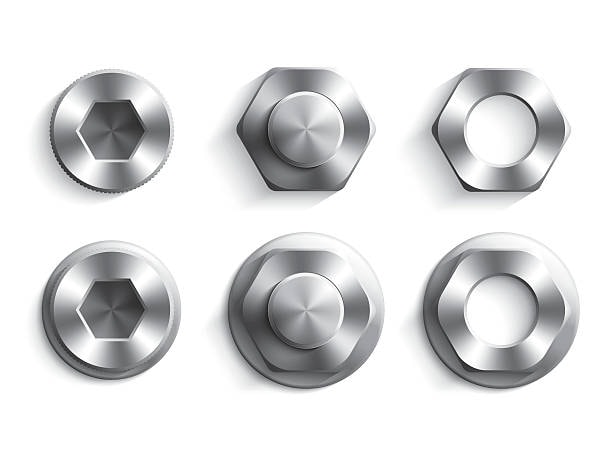
Meta Description: Find complete information about the different types of rivets such as self piercing, blind rivet, solid rivet and structural rivet. Get advanced with learning material, applications and methods of installation to provide better fastening practices brass rivets.
Rivets are permanent fasteners that have been the mainstay of construction and manufacturing over a thousand years providing a robust, dependable joining of materials because of the durable strength of a rivet. From the iconic steel bridges of the industrial revolution to modern aerospace applications, rivets continue to play a crucial role in connecting materials where welding isn’t feasible or desirable. Engineers, manufacturers, and Do-It-Yourself (DIY) people that require a fastening solution such as self piercing rivets and require the right type of rivet must be aware of the different types of rivets on the market today.
What Are Rivets and How Do They Work?
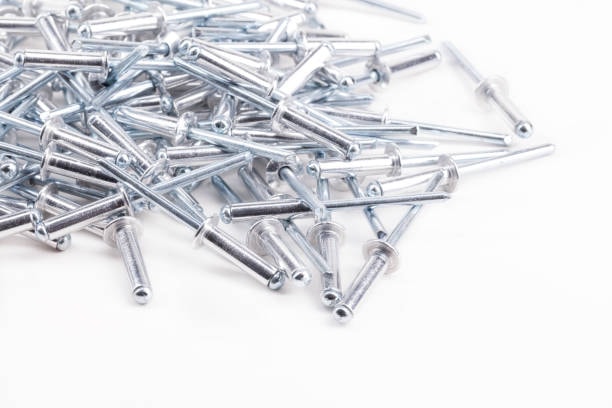
Rivets are permanent mechanical fasteners that are also mechanical, which are cylindrical, smooth in shape and have a head at the end. The pressure on installation forces the front half of the rivet to be squeezed along with the back half which is upset or deformed forming a second head, and hence clamping the materials by force. The process produces a permanent joint which can only be removed either by drilling out or cutting off the rivet thus making it the perfect choice in terms of applications that need permanent connections.
The basic functionality of rivets is the possibility to produce clamping strength by mechanical deformation. With a good installation, the rivets will help to spread the fastening materials loads over the joint area to offer great shear and tensile strength. Unlike threaded fasteners, rivets don’t rely on thread engagement, making them immune to loosening due to vibration or thermal cycling.
Solid Rivets: The Foundation of Permanent Fastening
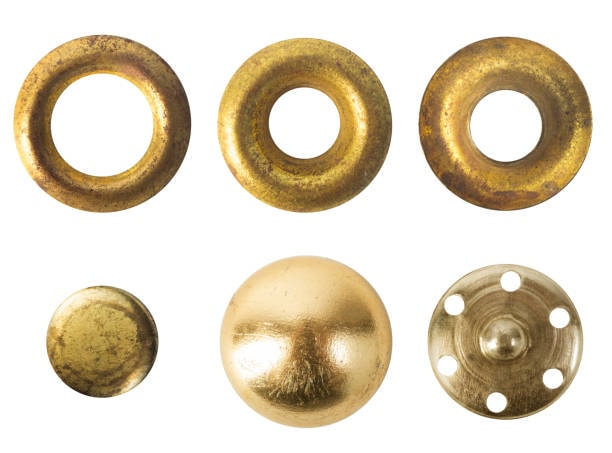
Steel rivets or rounds. Solid rivets, including countersunk rivets, are the oldest and most basic form of rivets; these are solid shafts with a head cut at a factory. Such rivets also need access on both sides of the work to be installed because the tail end has to be upset manually or mechanically to create second head. Installation Installation normally requires the rivet to be inserted through pre-drilled holes with rivet gun or bucking bar used to deform the tail end.
The load features of solid rivets are outstanding and they are therefore the lovable option in high-stress conditions of aeronautical, structural steelworks and heavy machinery manufacturing. They are also excellent to use in critical joints because structural steel rivets and stainless steel rivets can be used to manage both the shear loads and tensile loads, which might be disastrous in case of failure. General experience uses include fuselage construction of aircrafts, bridges constructing and assembling pressure vessels.
Blind Rivets: Single-Side Installation Revolution
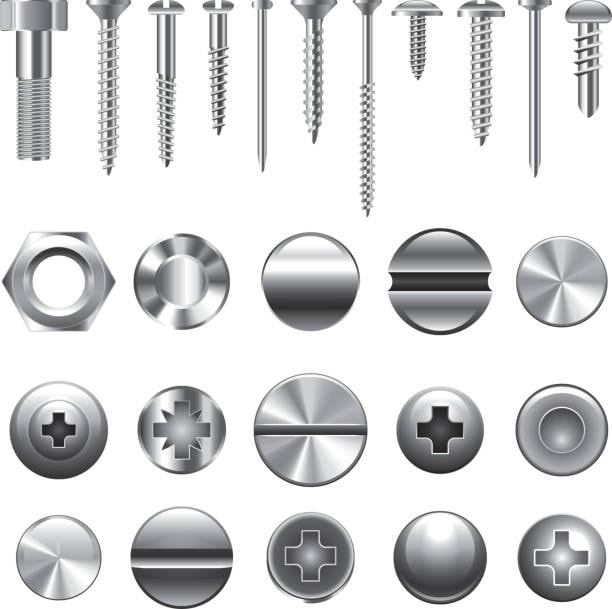
Pop rivets, (or pop rivets, blind rivets) transformed the fastening business in that they allowed fastening to be performed on one side of a piece of work only. The innovation created thousands of applications in which it is unreliable or even impossible to access the back side of the joint with other materials . It has a basic design of hollow body and the rivet body has a mandrel, or stem passing through the center.
The mandrel is also installed by being pulled through the rivet body with a special tool, during which the tail end swells to create a bulb which is pressed (or clamped) against the back face of the workpiece. After the right clamping force is established, at a specific point or should we say location, the mandrel breaks. The flexibility of blind rivets has rendered it highly successful in car manufacturing, household appliance assembly and in general fabrication.
Semi-Tubular Rivets: Balancing Strength and Efficiency
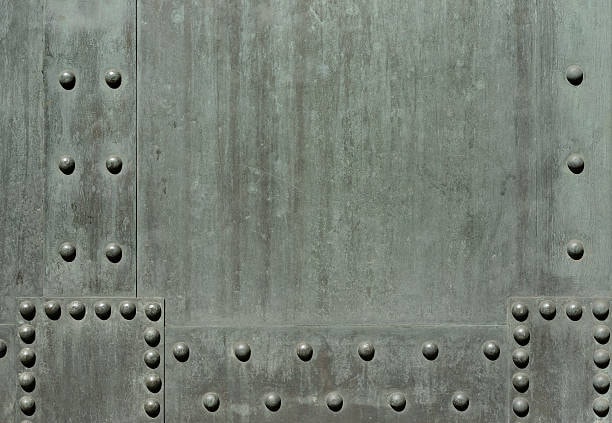
Semi-tubular rivets are an intermediate between solid and blind rivets and have a partially hollowed out design which allows the force necessary to install the rivet to be less, but because of their good strength quality. The shallow tail- end hole, usually 112 per cent of the diameter of the rivet enables the rivet to be upset more readily and to retain most of the strength of solid rivets.
This type of rivet is highly suitable in thin or fragile materials which could receive damages when the heavy pressure is used during the installation of solid rivet. They’re commonly used in leather goods, electronics assembly, and light sheet metal work. Semi-tubular rivets find wide application in the automobile industry to assembly domestic auto parts and to make a high reliable connector with electrical contacts.
Structural Rivets: Heavy-Duty Performance
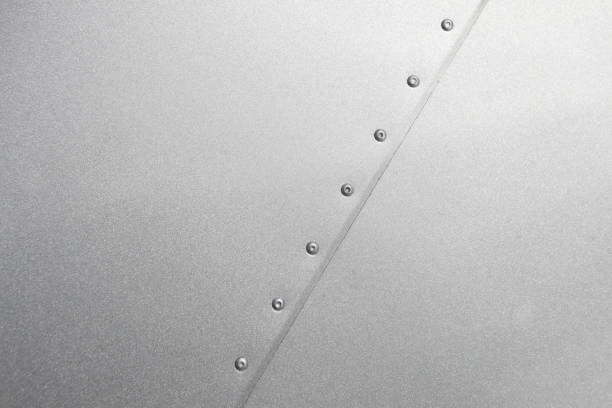
The latest use of blind rivet technology is the structural rivet which is aimed to perform like and even better than its solid rivet counterpart yet keep the same convenience of installation on a single side. These strong friction lock rivets are made out of sophisticated materials and mandrel designs which make them have very high shear and tensile strength ratings befitting critical structural systems.
The main points of structural rivet performance are their mandrels systems, which in turn are special and multiple break points, locking mechanisms can be included, as well as interference fits which guarantee the utmost clamping force. The heavy duty tools it takes to install really need to have the capability of producing large amounts of pulling force, but the quality of the joint it makes, more than makes up the extra cost of equipment in which critical applications work in the aerospace and structural steel joints.
Drive Rivets: Simple and Economical Solutions
Drive rivetsThe installation of drive rivets is very simple and it uses a hammer or other striking objects all that it needs is very simple and this is the reason why it can be used when there are fast assembly jobs that need to be done and also in the field. The simple design uses a short body of rivet and a separate pin which is pushed into the rivet to stretch the tail end and thus form the joint.
During installation, rivet is installed by pushing it through a pre-drilled hole and driving the pin through the rivet body. This moves triggers an expansion of the body of the rivet and locks the assembly in place. Typical uses are signs, duct and light structure assembly where a moderate strength is needed and where low installation complexity can meet the strength requirements.
Tubular Rivets: Hollow Core Advantages
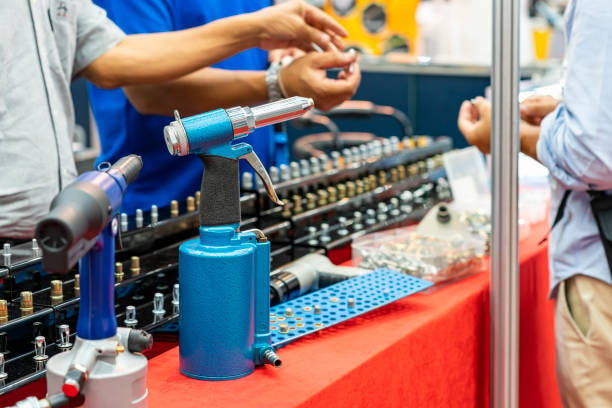
Tubular rivets have a hollow centre in their entire length, thus have distinct benefits that are used in special applications with solid rivets being not applicable. They may be used where space is at a premium (such as electrical and electronic work), the hollow design permitting wires, cables, or other elements to be passed through the rivet itself.
Installation is analogous to solid rivets, and needs access to both sides of the workpiece, although because hollow construction is used, particular care is needed to avoid tube crush. It can flow in electrical panel assembly, sheet metal assemblies wire harness installation, and where the rivet in question needs to be used as a fastener and briefly as a guiding point of other object.
Split Rivets: Flexible Fastening Solutions
Split rivets (bifurcated rivets) have a different design, as the rivet will have two, or more, prongs protruding out of the rivet head. These prongs are spread apart during installation to create the clamping action, offering a different approach to permanent fastening that’s particularly well-suited to soft materials and applications where traditional rivet installation might cause damage.
Installation is simply a positioning of the split rivet into material and the prongs pulled out to make them lock the assembly. Split rivets have relatively unhigh installation forces, which makes them suitable on delicate assemblies. Typical uses include making leather products, assembling paper products and applying fabrics to which flexibility and low installation forces are relevant.
Flush Rivets: Smooth Surface Requirements

Flush rivets are formed so that upon installation the surface is smooth and continuous with the rivet head flush with or recessed in the workpiece. This property is why they are ideal in any application where the aerodynamic efficiency, aesthetic look, or smooth running of moving components is paramount.
A good installation must have the preparation of holes with accuracy; holes are usually prepared by countersinking to ensure that the head of the rivet fits into the holes. Flush rivets are widely used in aerospace applications, to keep the air flowing whole and straight past wing and fuselage structures, and in automobiles, where their use in body panels, where appearance counts, is commonplace.
Large Flange Rivets: Maximum Bearing Area
Large flange rivets have a large head that is not proportional to flange size but actually offers extra load bearing contact against the work piece surface, this is best used when joining thin material or where the load distribution is essential. The swollen head diameter assists against pull through of the rivet in thin sheets when under load, which is one of the major failure methods in thin materials.
The design concept centers around distributing the applied loaded at an extended area hence decreasing stress concentration at the rivet position. That is why they are especially suitable in joining materials whose bearing strength is low or where vibration may tend to loosen ordinary rivets. Some uses are in sheet metal work and in composite material assembly.
Peel Rivets: Specialized Blind Installation
Peel rivets are a special type of blind rivet built to handle situations when standard blind rivet behavior is insufficient. The unique characteristic lies in their mandrel design, which creates multiple segments or “petals” that peel back and lock against the back side of the workpiece during installation.
During installation, the mandrel designed is in a such a way that the mandrel disintegrates and provides several points of contact with the work surface. The design offers higher vibration resistance than standard blind rivets and better load distribution as well as the single-side conveniences of installation. Examples of use are in automotive body panels and also making up appliances where it is vital to be resistant to vibration.
Aluminum Rivets: Lightweight and Corrosion Resistant
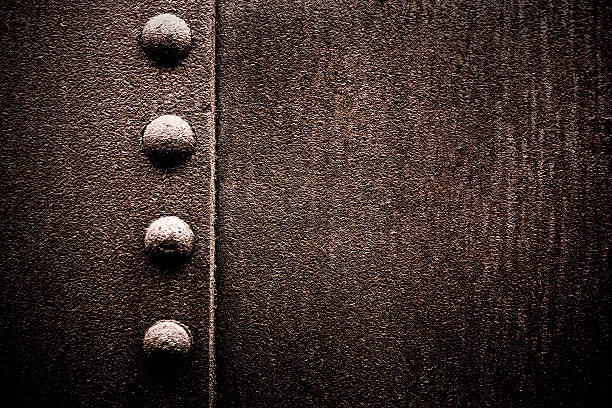
The most popular options are aluminum rivets, which represent a nice combination of great corrosion resistance, low weight, and strength-to-weight ratio. They’re particularly popular in aerospace and automotive applications where weight savings and copper material re important rivet diameter. There are many alloys of aluminum rivets and each of the alloys possesses different strength as well as corrosion resistance depending on the use intended.
The material makes great performance in the outdoor condition and it is friendly to aluminum construction and galvanic corrosion does not occur copper rivets. Various alloys of aluminum have different strengths depending on the properties needed, some require soft alloys to join thin materials using aluminum alloy; others require alloys of high strength because they are used in structural applications.
Steel Rivets: Maximum Strength Performance
Rivets made of steel are the strongest ones and they get used in large construction works. Carbon steel rivets are cheap and have high strength yet they need protective coating to protect against corrosion. Stainless steel rivets are both strong as well as possess high resistance to corrosion and thus they are suitable in marine, chemical as well as food processing applications round rivets.
The steel rivet is designed with strength characteristic in mind and so they are used in the most demanding cases where failure of a joint may have serious ramifications. Various alloys and tempering enable their optimization to requirements of strength and environmental conditions conclusion rivets.
Installation Tools and Equipment
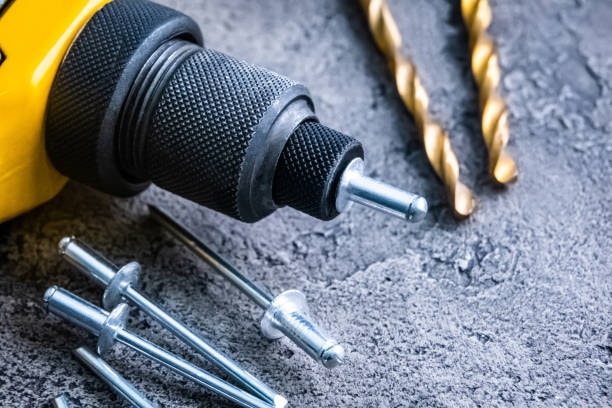
Installation of rivets needs the necessary equipment’s that can only fit the type of rivets used and needs. Manual rivet tools are used mainly in low-volume jobs, also in installations in the field install rivets, where portability is essential stainless rivets. Blind rivet tools come in many shapes and sizes to fit the many styles of rivets.
Faster and faster, less fatiguing to the operator, pneumatic rivet tools have been developed to perform medium and high volumes of production. Hydraulic systems offer the greatest pull forces when it comes to large rivets and structural blind rivets installations. Automated rivet installations contain feeder, positioning and installation of high volume assembly lines external surfaces.
Quality Control and Inspection Methods
The quality of installation of the rivets is regarded as very important in ensuring integrity in the joints and also avoiding costly failures. The simplest method of quality control is visual inspection because it involves scrutinizing the rivet which has been installed and checking whether the head is formed correctly and whether the rivet looks good rivet consists. Measurement The dimensional inspection measures vital dimensions of rivets in order to determine whether they meet specifications.
Destructive tests such as tensile testing and shear testing give conclusive confirmation of the quality of installation whereas non destructive tests can judge installations without destroying the joint. Installation process controls assist with the identification of the possible quality issues prior to their occurrence in defective installations oscar rivet.
Aerospace Applications
Aerospace is among the most challenging operating environments of rivet fasteners where they are required to be highly strong, lightweight, and under unreliable extremities. Aircraft structures depend more on solid rivets to hold primary structural joints, while threaded rivets and blind rivets hold secondary structures and locations which may not be convenient to install solid rivet hollow shaft.
Rivet technology has been advanced and methods used in quality control in aerospace industry have been advanced through many advances in the industry manufacturing industries. Flush rivets are widely deployed in order to keep air flows smooth on the planes, whereas special materials and processes are used to guarantee actuation in temperature and pressure extremities most rivets.
Automotive Manufacturing
Blind rivets are extensively used in automotive manufacture with riveting being used in the assembly of bodies and interior and non-structural riveting applications which cannot be welded. The mass-scale of auto manufacture has consequently resulted in automated rivet inserting systems and control processes, which is adapted to a high-speed assembly process threaded inserts.
Structural rivets have become more popular in vehicle manufacture with car makers seeking to bond different material together and to lighten vehicle bodies. The process of forming solid connections among various materials without heating them contributes to the usefulness of rivets in the contemporary automotive design needs.
Construction and Infrastructure
Typically, construction uses hot-driven solid rivets in steel bridge and building construction, although welding is mostly removing the use of rivets, in new constructions. Nevertheless, rivets continue to play an significant role in renovations and refurbishment of old structures, and even in new structures with structural blind rivets as an alternative to welded joints, its advantages in ease of installations is replacing its cost disadvantages in some new applications.
Rivet joints are long-lasting, which makes them an ideal solution to the infrastructure projects in the settings where permanent reliability is important. Rivet technology is often necessary in the bridge retrofitting and updating of old structures to retain their integrity and authenticity.
Marine and Corrosive Environments
The marine environments are especially challenging because the sea salt water is more corrosive and this necessitates the special considerations in the selection of materials and corrosion protections. In marine applications stainless steel and aluminum rivets are widely used, paying attention to galvanic compatibility between rivet and base metals.
Using rivets has the advantage of permanency in areas of marine use where constant repairs will be out of reach. Elegant choice of material and methods of installation will guarantee successful work in severe seas.
Conclusion
The rival fasteners world has varieties of designs, different materials and different types of applications that are still evolving with the evolving technology and being affected by the changing industry demands. The industries cannot do without these fasteners, though they have existed since time immemorial in forms of solid rivets, to the present-day structural blind rivets. Knowing about the properties of their various rivet types and how they can be applied to dissimilar materials professionally can help in providing the best fastening solutions to a given need.

